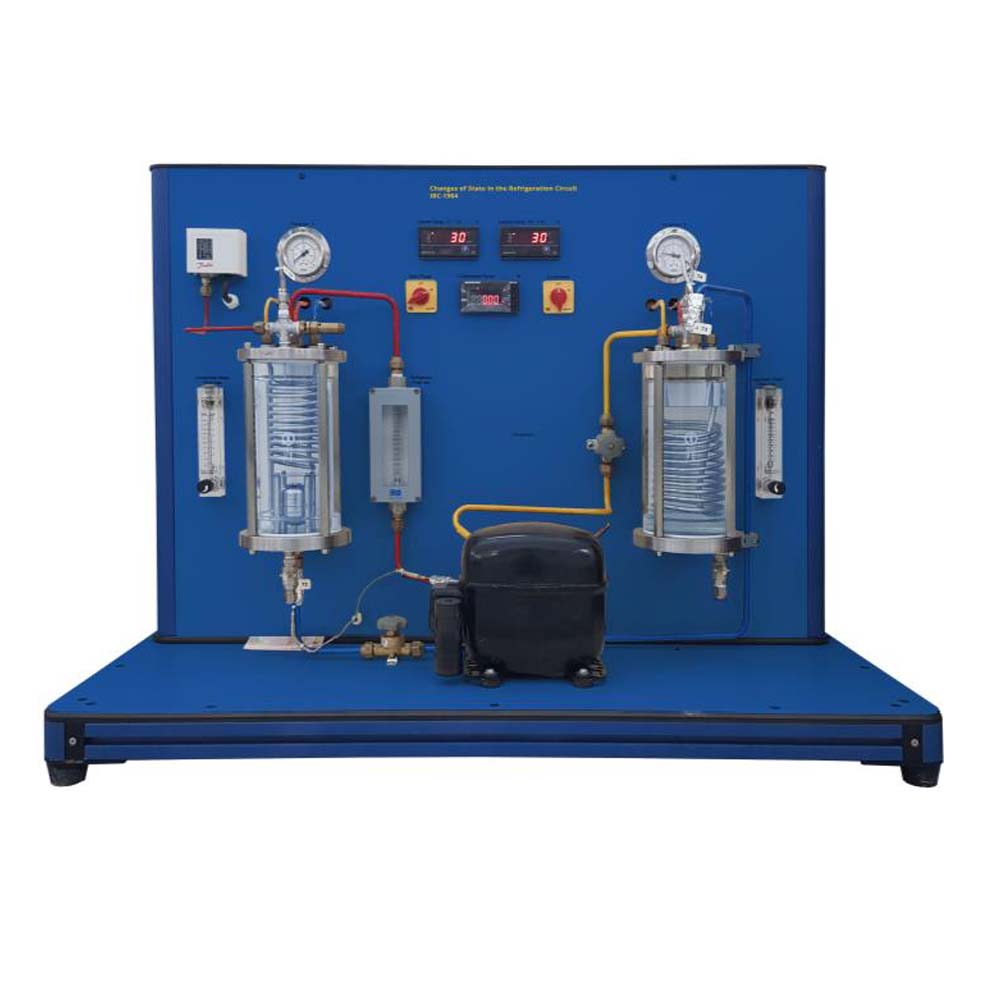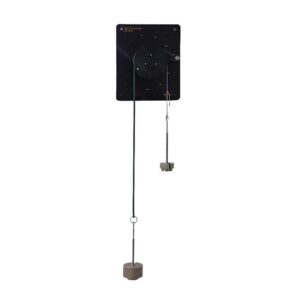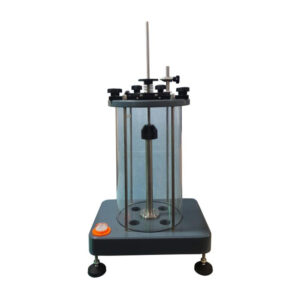The Demonstrative Refrigeration Study Unit is a very user-friendly and practical tool that can be used to clearly illustrate all the key stages of a compression frigorific cycle, including the condensation and evaporation phenomena. The most important thermodynamic quantities can be kept under control using a front panel with a mimic diagram and instrumentation, making it easier for the teacher and pupils to grasp. The device comes with manuals that go over the parts, the setup, and use steps, as well as several activities with outcomes from experiments. The key feature of the apparatus is that it enables the student to see how the cooling fluid affects the glass realized condenser and evaporator. The compression work is done by a piston-type hermetic compressor. The evaporating and condensing fluid is network water, and the cooling fluid is R141b, which has good thermodynamic properties and a high safety degree. A manual micrometrical valve implements the cooling gas isenthalpic expansion, enabling the student to confirm the impact of the expansion on the cycle’s thermal balance. The instrumentation is incorporated into the actual cycle and enables continuous monitoring of all the key parameters. Two digital instantaneous thermometers with switches show the inlet and outlet temperatures, respectively, while two flowmeters show the water flow rates during evaporation and condensation. Two pressure gauges show the pressures during condensation and evaporation. The equipment has a full synoptic panel that enables quick comprehension of the frigorific cycle.
Software IRC-1904SW (optional)
DAQ software specially designed in National Instrument™, LABVIEW™ environment to measure and calculate the results of apparatus. The software is optional and while using software a set of electronic sensors are included. Software can be run with any Windows™ environment.




